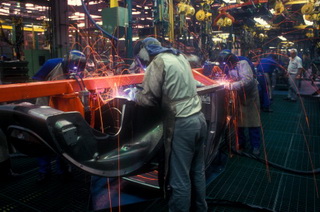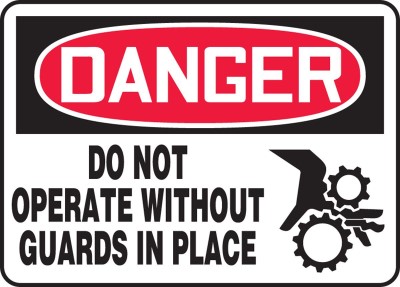
Industrial Accidents: How to Prevent Them
On the Scene E-Newsletter, Edition 120, August 10, 2010
 As an engineering consulting firm, we are asked, how can industrial accidents be prevented? CED frequently sees three potential factors in industrial accidents: (1) misuse of equipment and/or guards, (2) inadequate training, and (3) user distraction.
As an engineering consulting firm, we are asked, how can industrial accidents be prevented? CED frequently sees three potential factors in industrial accidents: (1) misuse of equipment and/or guards, (2) inadequate training, and (3) user distraction.
Devices as diverse as power tools, conveyors, robots, and power presses all involve energy release and moving parts. To protect users, moving parts that create hazards must be controlled. Guards are used by equipment manufacturers to prevent people from inadvertently coming into contact with a potential hazard. Guards can be as simple as a cover concealing a moving part or as sophisticated as a light beam on the front of a power press which prevents the press from cycling if an operator reaches into a hazardous area.
Although guards are put in place for protection from hazards, the intent of a guard can be defeated. Common examples around the home are when the chain guard on a bicycle is taken off and discarded or a lawnmower’s safety lever is taped to the mower’s handle. Employers are required by OSHA to make sure that hazards are controlled in the workplace, but ultimately, the user of a machine has to be the one to make sure the guard remains in place to protect them. Another factor leading to accidents is equipment misuse by employees. This misuse can occur from experienced users but often results from workers who are new on the job and who may not be adequately trained. An example of inadequate training occurred when a worker was crushed while dislodging packing material from a robotic arm moving pallets onto a conveyor system. Even though the robotic arm was shut down and locked out, when the material was dislodged, the conveyor system restarted, crushing the worker between the conveyor and the robotic arm. Due to inadequate training, the worker did not understand how the equipment safety features functioned, leading to the accident. Safety relies on properly designed equipment, training and operators following defined safety procedures.
Also, not every employee that goes through machine training and the formal qualifications (i.e. licensure) should be using a machine. For example, a skilled licensed aerial work platform operator may turn out to be an unskilled skid steer operator. Use of a machine is a privilege, not a right. Operators may have a talent for certain machines, but struggle to use other machines. For the sake of operator safety and productivity, management has to have the right checks and balances in place to put the right operators on the right machines.
The third key factor, distraction, potentially contributes to accidents as well. During his deposition, an injured carpenter stated, “It was the last piece of trim I needed to cut to finish the job and the accident just happened.” In this instance, the injury occurred because the carpenter may have been thinking about the next task rather than concentrating on completing the task at hand.
To answer the question, “How can we prevent accidents”, employers must ensure that guards and other safety systems remain in place, are properly used and maintained, and are not bypassed. Employers must also supply adequate training and implement safe work practices. And finally, employees need to keep guards and safety mechanisms in place, follow safe work practices, and keep their focus on the task at hand. Failure to adhere to employer mandated safety policy, procedures, programs, and misusing the safety guards and tools provided should have consequences
The goal of job safety programs and training is to change the heart, not merely the mind and specific actions. The ultimate goal is for employers and employees to attain an environment where there is a safety consciousness and individuals actively seek to recognize potential hazards, report potential hazards, and management and employees work the engineering processes together to make the workplace safer.






